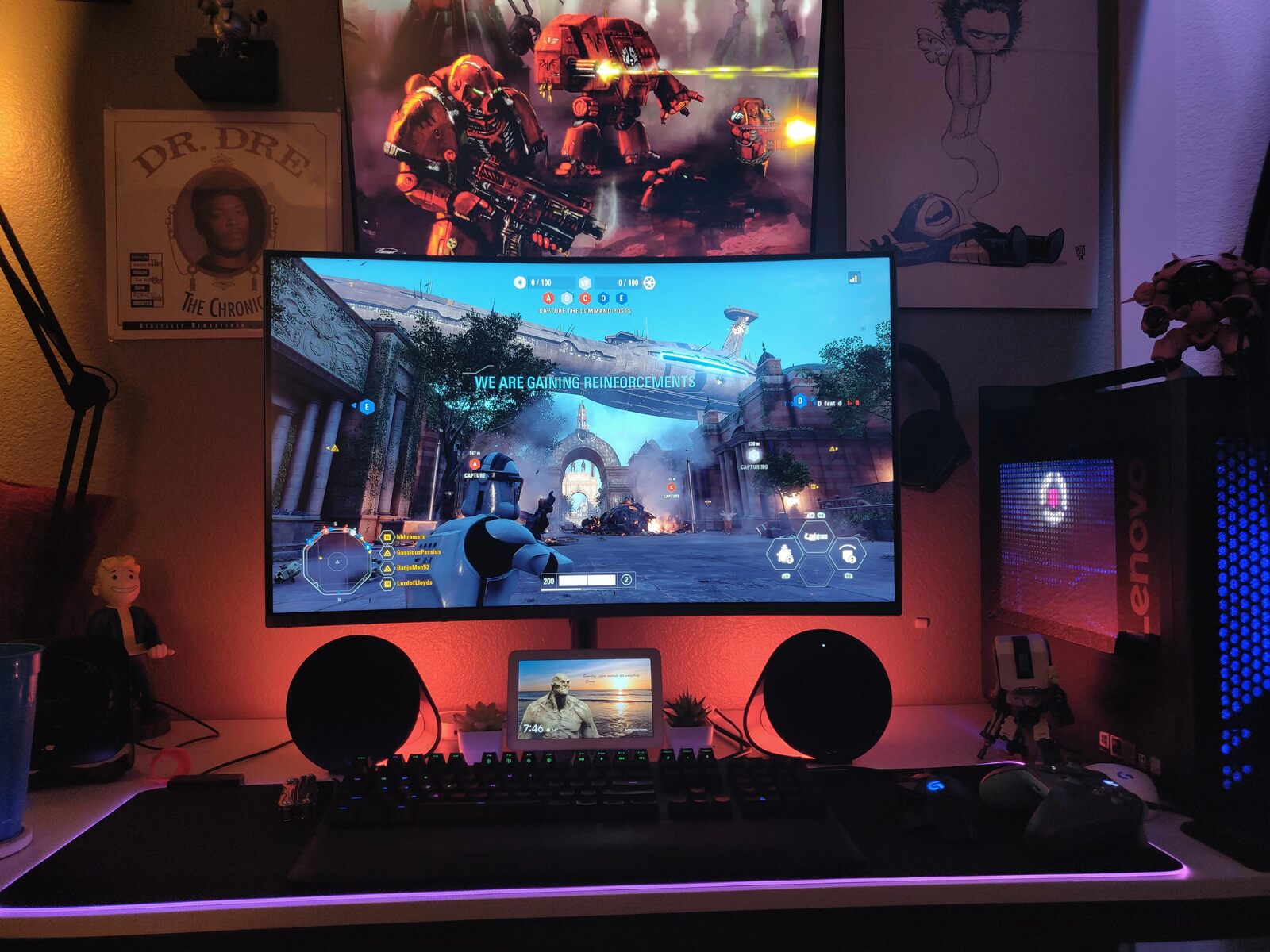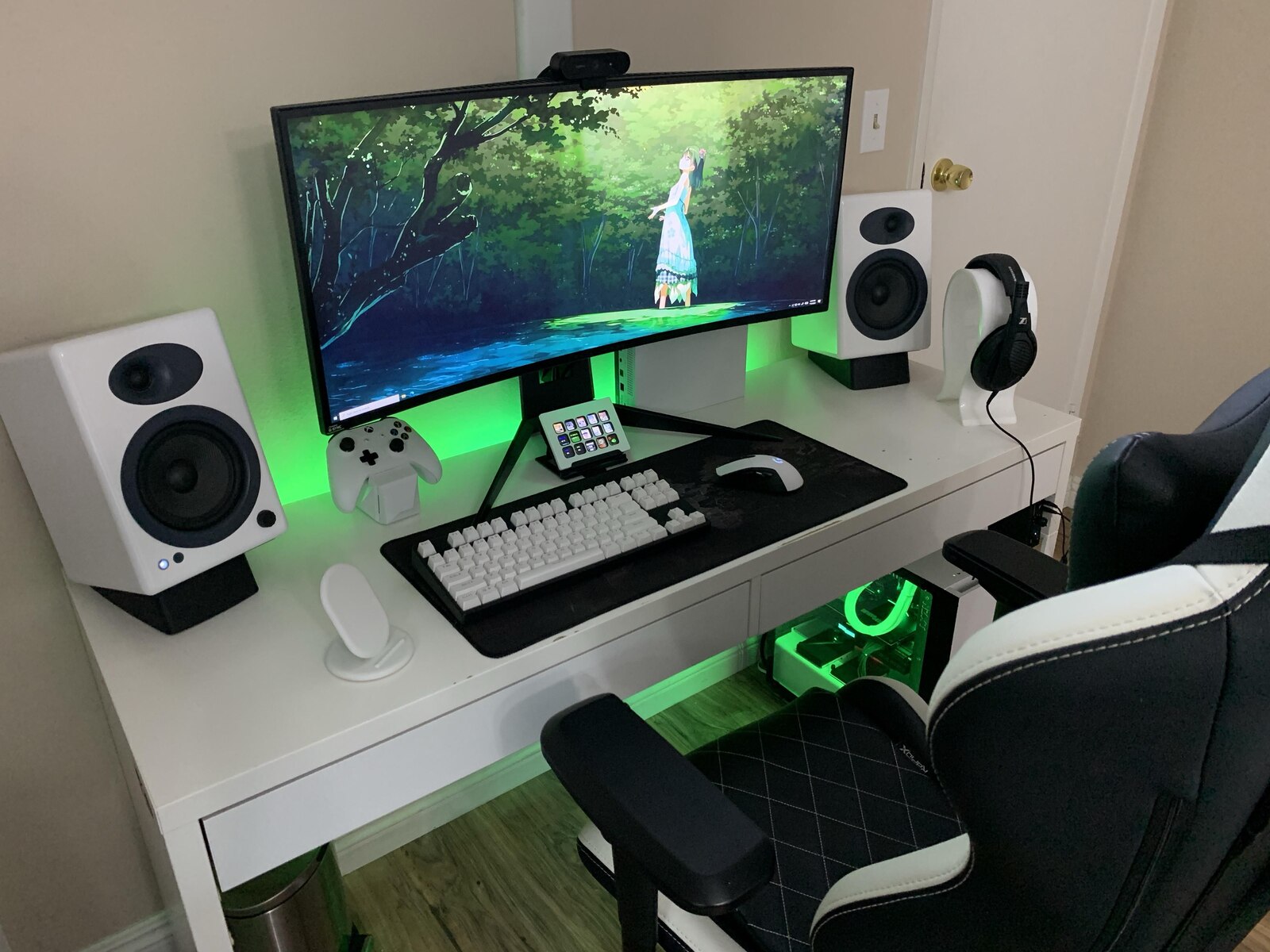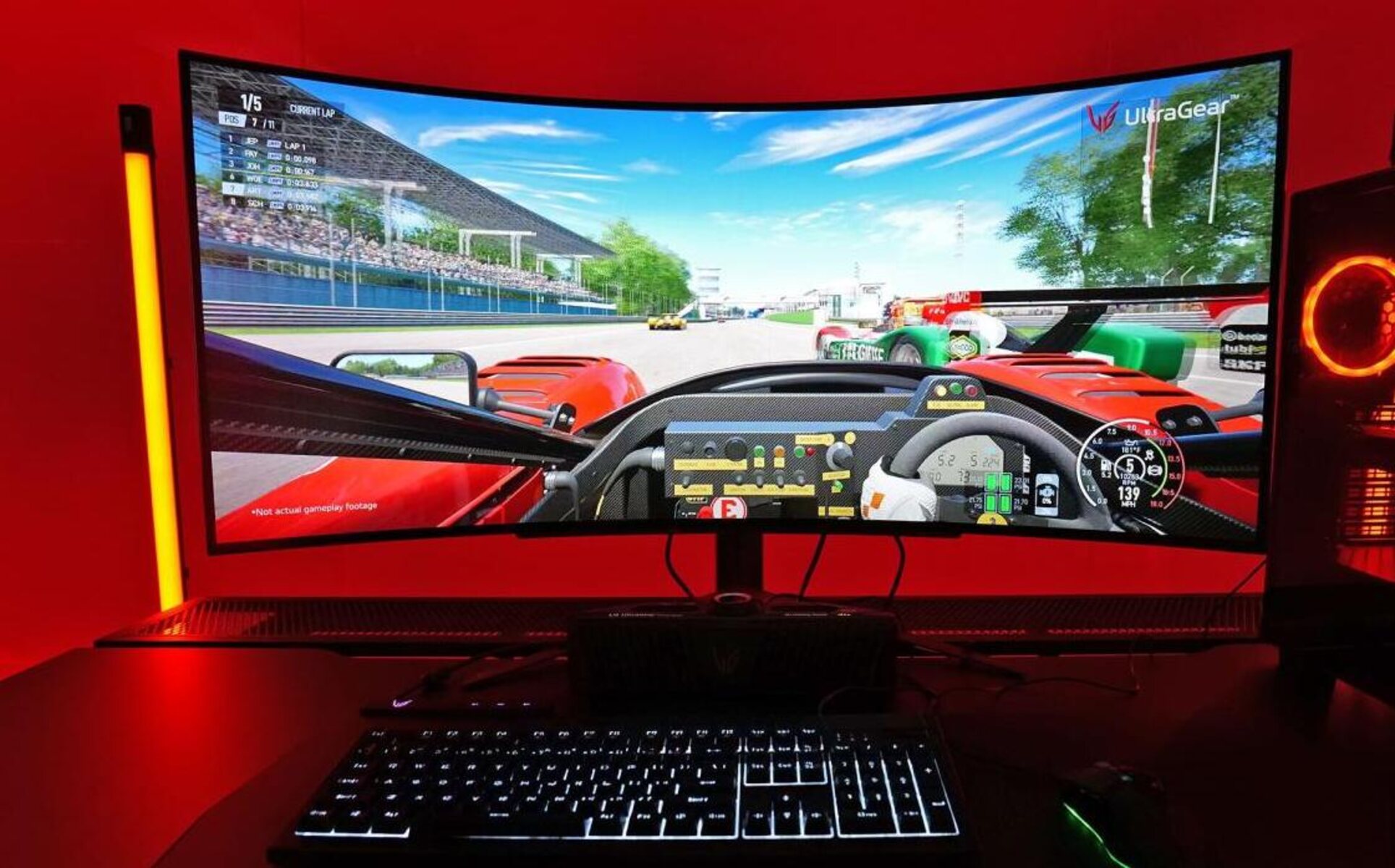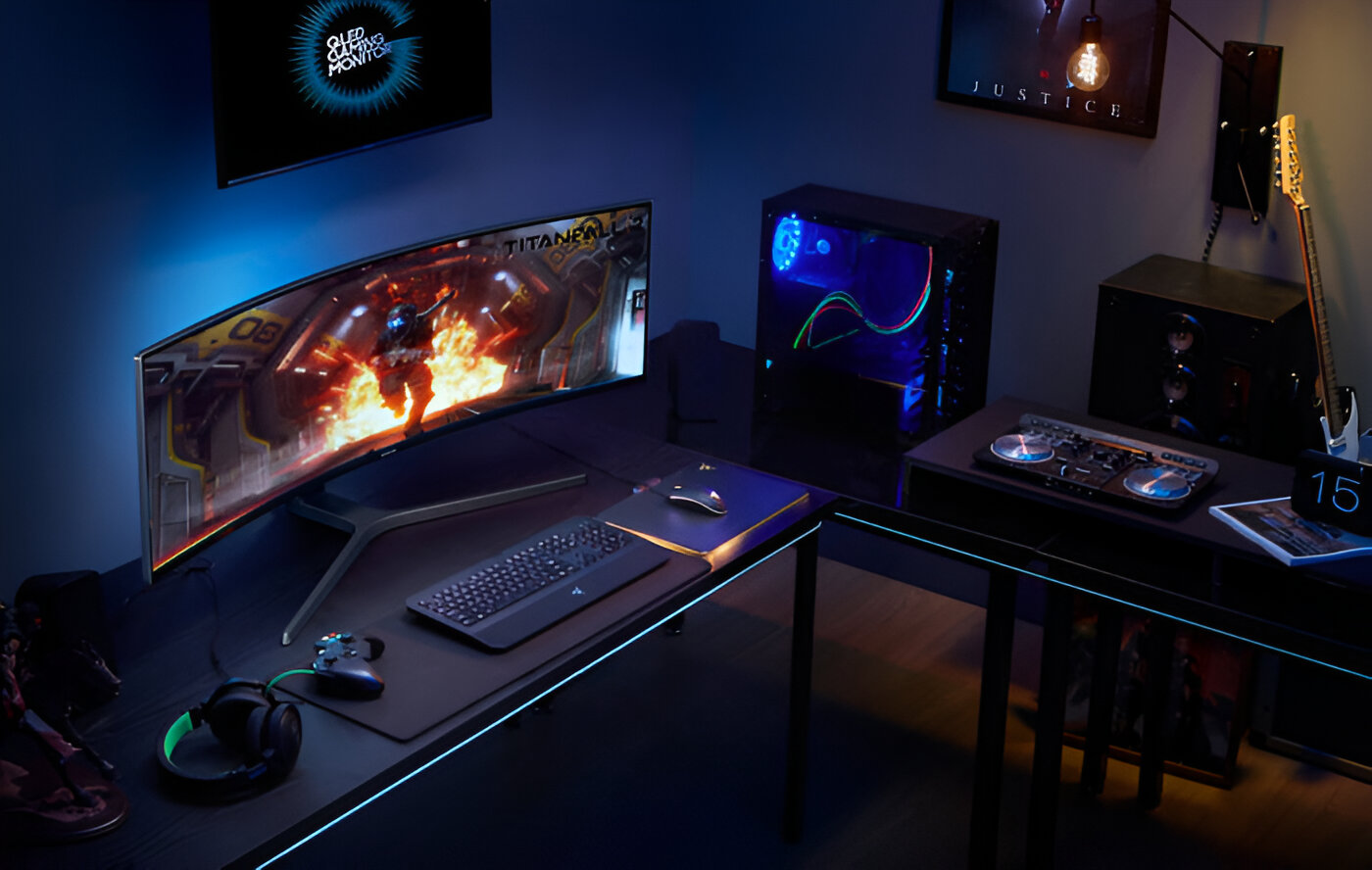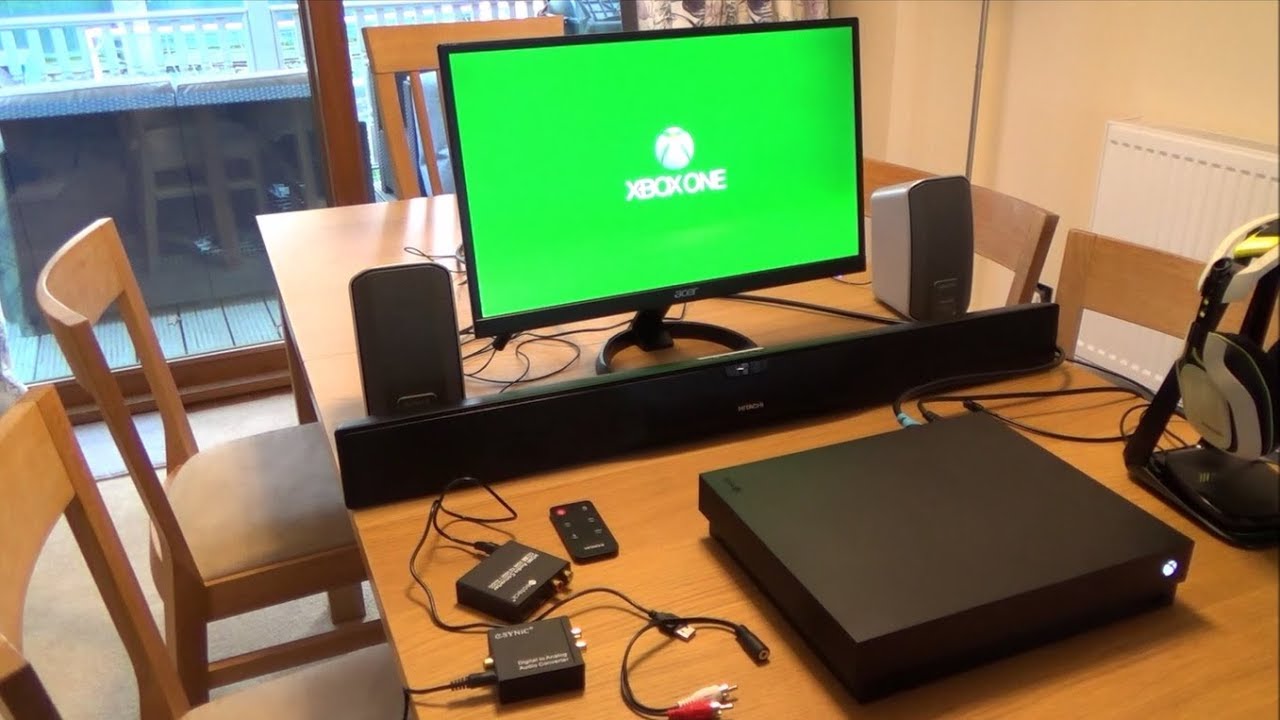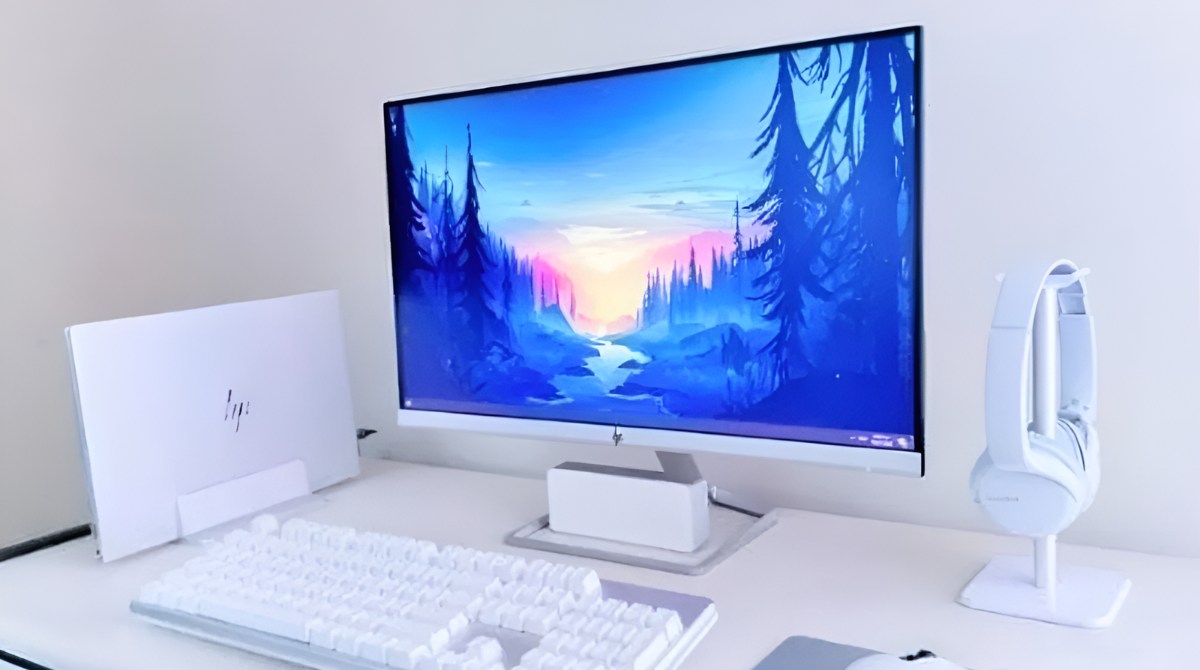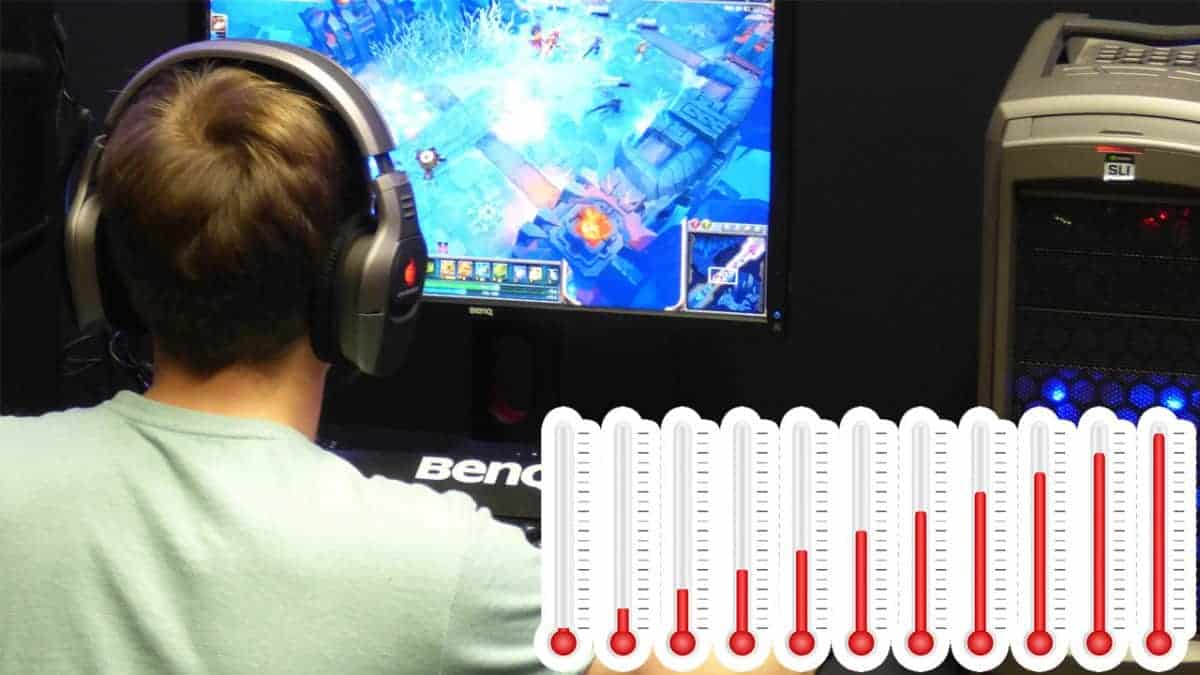Monitor Size
When it comes to choosing a gaming monitor, one of the crucial factors to consider is the size of the display. The monitor size plays a significant role in your gaming experience, as it affects the immersion, visibility, and overall enjoyment of your games.
The ideal monitor size largely depends on your personal preferences and gaming setup. If you have limited desk space or prefer a more compact setup, a smaller monitor, such as a 24-inch or 27-inch display, may be a better fit for you. These sizes are commonly chosen by gamers who prioritize a clutter-free gaming station or frequently travel with their setup.
On the other hand, if you have ample desk space and want a more immersive gaming experience, larger monitor sizes can provide a wider field of view. Gaming monitors ranging from 32 inches or more offer a more cinematic feel, allowing you to see more details in your games. They are particularly well-suited for open-world games or multiplayer titles where the ability to see more of the environment is crucial.
Another aspect to consider when choosing the monitor size is the viewing distance. The farther away you sit from the screen, the larger the monitor you may require to maintain a comfortable and clear view. If you typically sit closer to your monitor, a smaller size may be sufficient to achieve the desired visual experience.
Ultimately, the choice of monitor size depends on your personal preferences, gaming requirements, and the available space in your gaming setup. It’s essential to strike a balance between the immersive gaming experience and a practical size that complements your gaming station. Whether you opt for a smaller or larger size, be sure to consider other important features such as resolution, refresh rate, and panel type to ensure a well-rounded gaming monitor
Display Resolution
The display resolution of a gaming monitor is a critical factor that determines the level of detail and clarity you’ll experience in your games. It refers to the number of pixels on the screen, typically represented by two numbers, such as 1920×1080 (Full HD), 2560×1440 (Quad HD), or 3840×2160 (4K Ultra HD).
When choosing a gaming monitor, you’ll want to strike a balance between resolution and performance. Higher resolutions provide sharper visuals, allowing you to see more intricate details in your games. However, higher resolutions also demand more graphical power from your gaming rig. If your system isn’t capable of handling the higher demands of a particular resolution, you may experience lower frame rates or compromised performance.
For most gamers, a resolution of 1920×1080 (Full HD) or 2560×1440 (Quad HD) offers an excellent balance between visual quality and performance. Full HD resolution is still widely used and provides crisp visuals on smaller-sized monitors. Quad HD resolution, on the other hand, offers even sharper details on larger screens without putting too much strain on your system.
If you have a high-end gaming setup and want to push the limits of graphical fidelity, you can consider a 4K Ultra HD resolution. However, it’s important to ensure that your gaming rig can handle the demands of 4K gaming, including sufficient graphics processing power and a high refresh rate.
Another aspect to consider is the size of the monitor. Higher resolutions tend to be more noticeable on larger screens, so if you opt for a larger display, a higher resolution like 1440p or 4K may provide a more immersive and detailed gaming experience.
In summary, the display resolution of a gaming monitor significantly impacts the level of detail and visual clarity in your games. Consider your gaming setup, graphics capabilities, and the desired level of immersion when choosing a resolution. A balance between performance and visual quality is key to ensuring an enjoyable gaming experience.
Refresh Rate
The refresh rate of a gaming monitor refers to the number of times the screen refreshes the displayed image per second. It is measured in Hertz (Hz). A higher refresh rate translates to a smoother and more fluid gaming experience, reducing motion blur and making fast-paced gameplay feel more responsive.
The standard refresh rate for most monitors is 60Hz, which means the screen refreshes 60 times per second. While this is sufficient for everyday tasks and casual gaming, serious gamers often prefer higher refresh rates for a competitive edge. Refresh rates of 144Hz or even 240Hz have gained popularity in recent years, offering a significant improvement in motion clarity and reducing input lag.
However, it’s important to note that a higher refresh rate requires a more powerful graphics card to maintain smooth gameplay. If your gaming rig cannot consistently deliver high frame rates, you may not fully benefit from a higher refresh rate monitor. It’s essential to ensure that your hardware can support the desired refresh rate for a seamless gaming experience.
Another factor to consider is the type of games you play. If you primarily engage in fast-paced games such as first-person shooters or racing games, a higher refresh rate can give you a competitive advantage by providing smoother and more responsive gameplay. On the other hand, if you mainly play slower-paced games or engage in non-competitive gaming, a lower refresh rate may suffice.
Additionally, consider the resolution of the monitor when deciding on the refresh rate. Higher refresh rates are particularly noticeable on lower resolutions, such as 1080p, where the benefits of a smoother image are more pronounced. Higher resolutions, such as 1440p or 4K, may require more powerful hardware to achieve high frame rates necessary for a smoother gaming experience.
To summarize, the refresh rate of a gaming monitor greatly influences the smoothness and responsiveness of gameplay. Higher refresh rates can provide a competitive advantage, especially for fast-paced games, but require appropriate hardware to maintain high frame rates. Consider your gaming preferences, hardware capabilities, and budget when deciding on the ideal refresh rate for your gaming monitor.
Response Time
Response time is an essential specification to consider when choosing a gaming monitor. It refers to the time it takes for a pixel to transition from one color to another. A faster response time means less motion blur and better visual clarity during fast-paced gaming sequences.
The response time of a monitor is usually measured in milliseconds (ms). Lower response times, such as 1ms or 2ms, are ideal for competitive gaming, as they can eliminate ghosting and provide sharper imagery during high-speed action. However, it’s important to note that the actual response time experienced can vary depending on the changing pixel transitions and the overdrive settings of the monitor.
For casual gamers who don’t prioritize high-speed competitive gaming, a slightly higher response time, such as 4ms or 5ms, may still offer satisfactory performance. These monitors can deliver smooth visuals and are often more affordable than those with lower response times.
Additionally, it’s crucial to consider the panel technology when evaluating the response time of a monitor. Different panel types, such as Twisted Nematic (TN), In-Plane Switching (IPS), and Vertical Alignment (VA), have varying response time capabilities. TN panels tend to have faster response times but may sacrifice color accuracy and viewing angles. IPS panels offer better color reproduction and wider viewing angles but generally have slightly slower response times. VA panels provide deep blacks and high contrast ratios but may exhibit slower response times compared to TN or IPS panels.
It’s worth noting that while a faster response time is generally desirable, the difference between 1ms and 4ms may not be noticeable to the average gamer. Other factors, such as refresh rate and input lag, also contribute to the overall gaming experience. Therefore, it’s important to strike a balance between response time, panel technology, and other important features when selecting a gaming monitor.
To summarize, response time is a critical specification to consider when choosing a gaming monitor. Lower response times are preferable, especially for competitive gaming, but a slightly higher response time can still offer satisfactory performance for casual gamers. Consider the panel technology and other features that contribute to the overall gaming experience when making your decision.
Panel Type
When it comes to gaming monitors, the panel type plays a significant role in determining the overall image quality, color accuracy, and viewing angles. Different panel technologies, such as Twisted Nematic (TN), In-Plane Switching (IPS), and Vertical Alignment (VA), offer distinct advantages and disadvantages for gamers to consider.
TN panels are commonly found in gaming monitors due to their fast response times, which result in minimal motion blur during fast-paced gameplay. They also tend to have lower input lag, making them suitable for competitive gaming where speed and responsiveness are crucial. However, TN panels often have narrower viewing angles and may exhibit less accurate color reproduction compared to other panel types.
IPS panels are popular among gamers who value vibrant colors and wide viewing angles. They offer excellent color accuracy and consistency, making them ideal for immersive gaming experiences and visually stunning games. However, IPS panels typically have slightly slower response times compared to TN panels, which may lead to more noticeable motion blur in fast-paced games.
VA panels, on the other hand, provide deep blacks and high contrast ratios, resulting in excellent image quality. They strike a balance between TN and IPS panels by offering better color reproduction than TN panels and faster response times than IPS panels. VA panels are great for gamers who prioritize visual quality and appreciate vibrant imagery. However, they may suffer from some drawbacks such as slower response times and potential ghosting effects.
When choosing a panel type, it’s important to consider your gaming preferences and the specific requirements of the games you play. If you’re primarily a competitive gamer, a TN panel’s fast response time and low input lag may be advantageous. If you prioritize stunning visuals and color accuracy, an IPS panel may be the better choice. If you want a balance between image quality and response time, a VA panel may cater to your needs.
Ultimately, the choice of panel type depends on personal preference and the desired gaming experience. Consider factors such as response time, color accuracy, viewing angles, and your budget when selecting a gaming monitor with the ideal panel type for your needs.
Adaptive-Sync Technology
Adaptive-Sync technology, also known as Variable Refresh Rate (VRR), is a feature that aims to synchronize the refresh rate of a gaming monitor with the output of the graphics card. It helps to eliminate screen tearing and stuttering, providing a smoother and more visually pleasing gaming experience.
There are two main types of adaptive-sync technologies commonly found in gaming monitors: AMD FreeSync and NVIDIA G-Sync. AMD FreeSync is an open-source technology that works with AMD graphics cards, while NVIDIA G-Sync is proprietary and designed to be used with NVIDIA GPUs. Both technologies aim to achieve the same end goal—eliminating screen tearing and stuttering—but differ in their implementation.
Adaptive-Sync technology dynamically adjusts the refresh rate of the monitor to match the frames per second (FPS) outputted by the graphics card. When the frame rate drops, the refresh rate of the monitor decreases accordingly, and vice versa. This synchronization ensures that each frame is displayed smoothly and without tearing or stuttering.
Having a monitor with adaptive-sync technology can greatly enhance the gaming experience, especially in games with varying frame rates or intense action sequences. It provides a noticeable improvement in the smoothness and fluidity of gameplay, allowing for more immersive and enjoyable gaming sessions.
It’s worth noting that for adaptive-sync technology to work, both the gaming monitor and graphics card need to be compatible with the respective technology (FreeSync or G-Sync). If you have an AMD graphics card, a monitor with FreeSync support is recommended, while NVIDIA GPU owners should opt for a G-Sync compatible monitor.
However, it’s worth mentioning that recently, NVIDIA announced support for FreeSync on certain G-Sync capable monitors, allowing even more flexibility for gamers. This development expands the options for gamers, enabling them to choose from a wider range of monitors.
In summary, adaptive-sync technology is a valuable feature for gamers, as it helps to eliminate screen tearing and stuttering. Whether you choose an AMD FreeSync or NVIDIA G-Sync compatible monitor depends on the graphics card you have. Having a gaming monitor with adaptive-sync technology can provide a smoother, more immersive gaming experience, particularly in games with varying frame rates.
Connectivity Options
When selecting a gaming monitor, it’s important to consider the connectivity options available to ensure compatibility with your gaming setup. The connectivity options determine how you can connect your monitor to your gaming console, PC, or other devices, allowing for seamless and hassle-free gaming experiences.
One of the most common connectivity options is HDMI (High-Definition Multimedia Interface). HDMI ports are found on almost all modern gaming monitors and offer a digital connection that supports high-definition video and audio transmission. HDMI is widely compatible with gaming consoles, PCs, and media devices, making it a versatile choice for connecting your monitor to various devices.
DisplayPort is another popular connectivity option for gaming monitors. DisplayPort offers similar functionality to HDMI, providing high-quality digital audio and video transmission. However, DisplayPort generally supports higher refresh rates and is popular among PC gamers who prioritize performance and compatibility with high-end graphics cards.
In addition to HDMI and DisplayPort, some gaming monitors also offer other connectivity options, such as DVI (Digital Visual Interface) and VGA (Video Graphics Array). However, these options are becoming less prevalent in modern gaming monitors due to their limitations in terms of resolution support and video quality.
Furthermore, it’s worth considering the number of available ports for each connectivity option. This is particularly important if you plan on connecting multiple devices to your gaming monitor simultaneously. Having multiple HDMI or DisplayPort inputs can make it more convenient to switch between devices without having to constantly swap cables.
Aside from video connections, it’s also essential to check if your gaming monitor has additional connectivity options such as USB ports or audio jacks. USB ports can be useful for connecting peripherals like gaming keyboards, mice, or external hard drives, while audio jacks allow you to connect headphones or speakers directly to the monitor for audio output.
To summarize, it’s important to consider the connectivity options available when choosing a gaming monitor. HDMI and DisplayPort are the most common and versatile options, while additional ports like USB and audio jacks can add convenience to your gaming setup. Ensure the monitor has the necessary ports to connect with your gaming devices efficiently and effectively.
HDR Support
HDR (High Dynamic Range) is a feature that enhances the visual quality of content by providing a broader range of colors, improved contrast, and increased brightness. It allows for more realistic and vibrant visuals, bringing games to life with greater depth and detail. When choosing a gaming monitor, considering HDR support can significantly enhance your gaming experience.
HDR-capable monitors provide a higher color gamut, allowing for a wider range of colors to be displayed. This results in more accurate and lifelike colors, making games look more immersive and vibrant. Additionally, HDR provides greater contrast, allowing for deeper blacks and brighter highlights, which in turn enhances the overall visual dynamic range.
However, it’s important to note that not all monitors labeled as “HDR” offer the same level of HDR performance. There are different levels of HDR, including HDR10, HDR400, HDR600, and HDR1000. These levels indicate the monitor’s ability to reproduce HDR content, with higher levels offering better image quality and HDR performance. For a truly impactful HDR experience, it is recommended to choose a monitor with higher HDR certification levels, such as HDR600 or HDR1000.
Moreover, the actual HDR performance can also be influenced by factors such as peak brightness, local dimming capabilities, and color accuracy. Monitors with higher peak brightness can deliver brighter highlights, while those with local dimming can provide better control over backlighting for improved contrast. Additionally, color accuracy ensures that the HDR content is displayed as intended, offering vivid and accurate colors.
It’s essential to ensure that the gaming monitor’s HDR support is compatible with the HDR content you’ll be consuming. Check if the monitor supports the specific HDR standard used by your gaming console, PC, or streaming device. For example, if you have an Xbox One X or PlayStation 5, you’ll want a monitor with HDR10 support.
In summary, HDR support can greatly enhance the visual quality of games, providing a more immersive and realistic experience. When selecting a gaming monitor, consider the HDR certification level, peak brightness, local dimming capabilities, and color accuracy to ensure a truly impactful HDR performance. Compatibility with your gaming device’s HDR standard is also crucial for a seamless HDR experience.
Price Range
Price is a significant factor to consider when choosing a gaming monitor, as it ultimately determines the affordability and value for money. The price of a gaming monitor can vary greatly depending on several factors, including the size, resolution, refresh rate, panel type, and additional features.
Generally, smaller-sized monitors with lower resolutions and standard features tend to be more budget-friendly. If you’re on a tight budget or looking for a secondary monitor, a 24-inch or 27-inch monitor with Full HD (1920×1080) resolution may offer good value for the price. These monitors are suitable for casual gaming and everyday tasks but may lack some advanced features found in higher-priced options.
As you move up in screen size, resolution, and features, the price of gaming monitors typically increases. Larger monitors, such as 32 inches or ultra-wide displays, often come with higher price tags due to their immersive gaming experience and larger viewing area. Similarly, monitors with higher resolutions, such as Quad HD (2560×1440) or 4K Ultra HD (3840×2160), offer crisper visuals but are generally more expensive.
Other factors that can impact the price of a gaming monitor include the refresh rate, response time, panel type, and additional features such as HDR support, built-in speakers, or ergonomic stands. Monitors with higher refresh rates, faster response times, and advanced panel technologies (such as IPS) tend to come at a premium. Similarly, monitors with HDR support and additional features may also have a higher price point.
It’s important to set a budget and prioritize the features and specifications that are most important to you. Consider your gaming needs, preferred screen size, desired resolution, and any specific features you may value, such as adaptive-sync technology or HDR support. By narrowing down your requirements and budget, you can find a gaming monitor that offers the best balance between performance, features, and affordability.
Keep in mind that while it’s tempting to opt for the cheapest option available, investing a bit more in a higher-quality gaming monitor can lead to a better overall gaming experience and increased longevity. It’s often worthwhile to strike a balance between price and quality to ensure you get the most out of your gaming investment.
In summary, the price range for gaming monitors can vary significantly based on size, resolution, features, and specifications. Consider your budget, gaming needs, and desired features to find a gaming monitor that offers the best value for money and suits your gaming setup.
Conclusion
Choosing the right gaming monitor is crucial for a fulfilling and immersive gaming experience. In this guide, we covered several key factors to consider when selecting a gaming monitor, including monitor size, display resolution, refresh rate, response time, panel type, adaptive-sync technology, connectivity options, HDR support, and price range.
Monitor size and resolution play a significant role in your gaming experience, affecting immersion and visual clarity. Consider your preferences and available space when selecting the optimal size and resolution for your gaming setup.
The refresh rate and response time impact the smoothness and responsiveness of gameplay. Higher refresh rates and faster response times contribute to smoother motion and reduced input lag, enhancing fast-paced gaming experiences.
Panel type determines factors such as color accuracy, viewing angles, and contrast levels. Choose a panel type that aligns with your gaming preferences and desired visual experience, whether it’s a TN panel for fast response times, an IPS panel for accurate colors and wide viewing angles, or a VA panel for deep blacks and high contrast ratios.
Considering adaptive-sync technology ensures a seamless gaming experience by eliminating screen tearing and stuttering. Check if your gaming monitor is compatible with the adaptive-sync technology supported by your graphics card.
Connectivity options, such as HDMI and DisplayPort, enable you to connect your monitor to gaming devices, while additional ports like USB and audio jacks add convenience to your setup.
If you desire enhanced visual quality, HDR support can provide vibrant colors, improved contrast, and increased brightness. Ensure your gaming monitor supports the specific HDR standard of your gaming device for optimal compatibility.
Lastly, set a budget and consider the price range in relation to the features and specifications you prioritize. Striking a balance between performance, features, and affordability will help you find the best gaming monitor for your needs.
By carefully considering these factors and finding the right balance for your gaming preferences and budget, you can choose a gaming monitor that enhances your gaming experience and brings your gaming sessions to new heights. Happy gaming!







